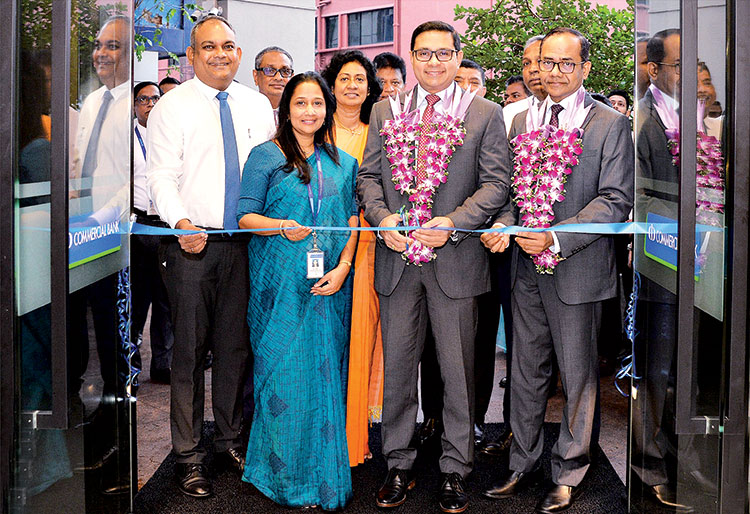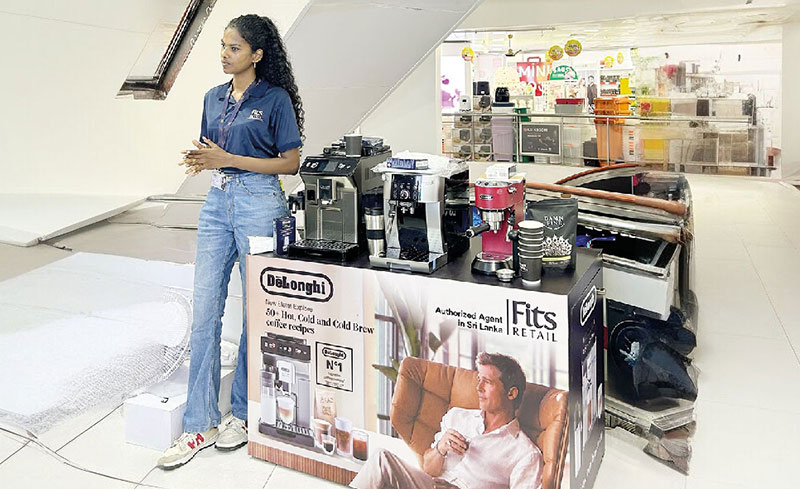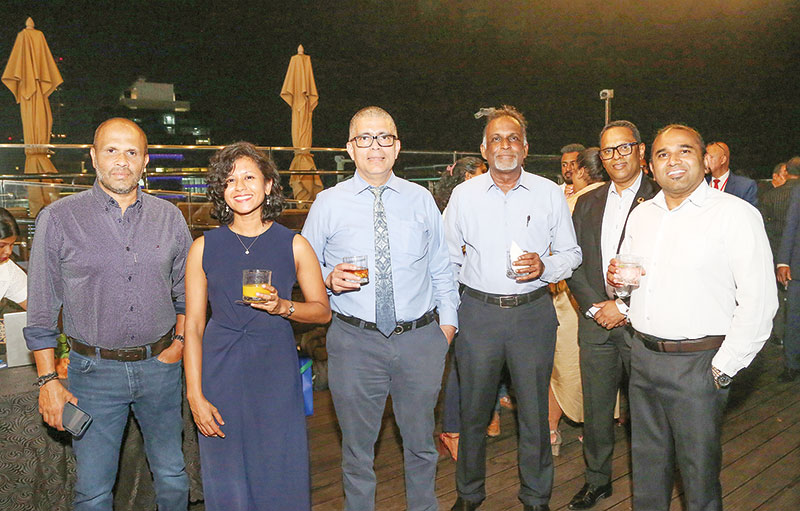Business
The X-Press Pearl Disaster: From Flames to Prevention

By Ruwan Samaraweera
Sri Lanka’s ecological disaster related to the MV X-Press Pearl, a container ship carrying hazardous chemicals that caught fire off its coast on 20th May 2021, is back in the news as the country attempts to claim damages. The ecological disaster washed up tons of plastic pellets and other pollutants on the country’s beaches and harmed its marine ecosystem.
It is a stark reminder of the risks associated with transporting hazardous materials and the urgent need for governments and companies to take proactive measures to prevent such disasters in the future. This blog revisits the environmental impact of the X-Press Pearl disaster and discusses how Sri Lanka can use the Sendai Framework for Disaster Risk Reduction (SFDRR) to develop strategies and policies to prevent similar disasters from happening near its shores again.
The Environmental and Economic Impacts of X-Press Pearl
The X-Press Pearl disaster has had a devastating impact on Sri Lanka’s environment and its citizens. The Marine Environment Protection Authority (MEPA) reported an oil slick of an approximate area of 0.51 km2 with a length of 4.3 km around the wreck. According to the International Pollutants Elimination Network, the ship’s cargo included billions of plastic pellets (microplastics used to produce plastic) which have washed up on the shore, causing damage to the country’s marine ecosystem, tourism industry and its reputation as an eco-tourism destination. According to the International Maritime Hazardous Goods Regulation (IMDG regulation), an analysis of the cargo manifest revealed that at least 81 of the 1,486 containers aboard the MV X-Press were transporting 15 distinct categories of hazardous materials, including 25 tons of nitric acid. While the full extent of the damage is yet to be determined by the MEPA, the insurance company for the ship has already compensated the Sri Lankan government to the tune of USD 7.85 million.
Beyond the monetary valuation, the disaster has severely impacted Sri Lanka’s fishing industry, with over 20,000 fishing families and approximately 16,000 fishermen affected. Additionally, the spillage of hazardous chemicals into the sea has killed over 300 marine animals, including turtles, dolphins, and whales.
The disaster has also raised concerns about the impact of hazardous material transportation on the environment and public safety, highlighting the need for more stringent regulations, especially in densely populated areas. It also revealed institutional and capacity constraints and a lack of training in handling such emergencies, which should be addressed to prevent such disasters. This is where the SFDRR comes into play, providing a comprehensive framework to address these issues and build resilience in the face of such catastrophes.
The Way Forward: Preventing Future Maritime Disasters
The X-Press Pearl disaster is a wake-up call for governments and companies worldwide to take proactive measures to prevent similar disasters in the future. Since its inception in 2015, the SFDRR has become widely recognised for managing diverse disasters worldwide.
The Sendai Framework
Even though there are various frameworks and policies related to disaster risk reduction at the national level in Sri Lanka, including the National Disaster Management Plan, they were inadequate to address the X-Press Pearl disaster timely and effectively. Other countries use numerous measures like response and containment techniques, preparedness and planning, regulation and enforcement, international cooperation and collaboration. The SDFRR combines these individual efforts and brings them under an umbrella framework.
Hence, it offers a comprehensive framework that countries like Sri Lanka can adopt to address the challenges associated with hazardous material transportation and other maritime disaster risks. Moreover, while the adoption of the SFDRR is novel for preventing maritime disasters, it has been widely adopted by many countries, including but not limited to Japan (climate change, Tsunami, Fukushima nuclear disaster, etc.), Australia (wildfires), and Nepal (earthquakes). Therefore, the X-Press Pearl maritime disaster emphasises the potential for harnessing the SFDRR’s wide range of applicability to prevent future similar disasters in Sri Lanka.
Understanding the risks
The first step in preventing such disasters is understanding the risks of shipping hazardous materials through Sri Lanka’s waters. Sri Lanka did not have a proper contingency plan in place to deal with a disaster of this scale. Furthermore, the risk assessment conducted prior to granting permission for the vessel to enter Sri Lankan waters did not adequately consider the potential impact of a disaster. Thus, as mentioned in the SFDRR, Sri Lanka should conduct a risk assessment concerning the potential impact of such disasters on the environment, the economy, and public health.
Strengthening regulations
The SFDRR emphasises the need to strengthen regulations and laws to prevent disasters. For instance, the Draft National Transport Policy of 2009 highlights the safer transportation of hazardous material in all modes, yet the cabinet has not approved this.
Therefore, it is imperative that Sri Lanka reviews its existing laws and regulations, such as the National Environmental Act No. 47 of 1980, the Marine Pollution Prevention Act No. 35 of 2008, and the Dangerous Goods (Transportation) Regulations governing the transportation of hazardous materials and makes necessary amendments to ensure compliance with international standards.
Building capacity
The SFDRR encourages increasing preparedness at all echelons of society. During the X-Press Pearl disaster, emergency responders lacked the necessary equipment and training to respond to the disaster effectively. Additionally, poor coordination between different agencies hampered the response effort. To address these issues, training programmes in collaboration with the Sri Lanka Navy and MEPA could be conducted for essential stakeholders such as shipping companies, port authorities, and emergency responders. These programmes could provide them with the necessary knowledge and skills to prevent and effectively respond to such catastrophes.
Promoting public awareness
The framework stresses the need to educate the public and raise awareness to prevent disasters. However, in the recent disaster, the lack of public awareness about the risks associated with transporting hazardous materials made it difficult to generate support for preventive measures. Therefore, the government, private sector, non-governmental organisations and other relevant stakeholders are responsible for informing the public about the risks of transporting hazardous commodities and the importance of adopting safe shipping practices.
Collaboration and partnerships
The framework encourages cooperation and partnership amongst all parties involved in disaster management. However, Sri Lanka did not collaborate effectively with other countries or international organisations to prevent the disaster. For example, there was no information sharing about the vessel’s previous safety record, which could have alerted Sri Lanka to potential risks. To avoid similar events in the future, Sri Lanka could collaborate with other nations (India and other South Asian countries), international organisations (such as the International Maritime Organisation), and shipping companies.
The disaster has also brought attention to the need for sustainable shipping practices, such as using alternative fuels and more eco-friendly packing materials.Hence, by adopting the Sendai Framework, Sri Lanka can develop an effective approach to prevent similar disasters in the future through proactive measures to protect the environment, public health, and the economy.
Link to blog: https://www.ips.lk/talkingeconomics/2023/05/03/the-x-press-pearl-disaster-from-flames-to-prevention/
Ruwan Samaraweera is a Research Officer at IPS with a background in entrepreneurial agriculture. He holds a Bachelor’s in Export Agriculture from Uva Wellassa University of Sri Lanka. His research interests are environmental economics, agricultural economics, macroeconomic policy and planning, labour and migration, and poverty and development policy. (Talk to Ruwan – ruwan@ips.lk)
Business
ComBank unveils new Corporate Branch at Head Office

The Commercial Bank of Ceylon has transformed its iconic ‘Foreign Branch’ into the ‘Corporate Branch,’ reaffirming its commitment to delivering dedicated, comprehensive financial solutions to corporate and trade customers.
The Bank said this transformation represents a new milestone in its illustrious journey, and resonates with the rich commercial heritage of Colombo, a city that has long served as a vital trading hub in the region.
Strategically located at the Bank’s Head Office at Commercial House, 21, Sir Razeek Fareed Mawatha (Bristol Street), Colombo 1, this rebranded Corporate Branch stands as a first of its kind in Sri Lanka —a premier financial hub tailored exclusively to the needs of corporate customers, the Bank said. The transformation aligns with the Bank’s vision of providing unparalleled service excellence, bespoke financial solutions, and fostering long-term business partnerships.
Commenting on this strategic initiative, Commercial Bank’s Managing Director/CEO Sanath Manatunge stated: “It is our aspiration that just as the historic Delft Gateway, at which our Head Office is located, once opened the path to the Dutch Fort, our Corporate Branch will chart a new era of enduring and prosperous business collaborations, that will extend beyond Sri Lanka’s shores.”
Business
Fits Retail and Abans PLC Unveil Exclusive DeLonghi Premium Coffee Experience

Fits Retail has partnered with retail giant Abans PLC to showcase the iconic DeLonghi coffee machines at two of Colombo’s most prestigious locations: Abans Elite Colombo 3 and Abans Havelock City Mall showrooms.
At these dedicated demonstration zones, visitors can discover the unparalleled precision engineering and user-friendly technology that have made DeLonghi machines the preferred choice for discerning coffee lovers in more than 46 countries worldwide. Renowned for consistently delivering café-quality espresso, cappuccino, and even specialty cold brews, DeLonghi machines exemplify Italian innovation at its finest.
Yasas Kodituwakku, CEO of Fits Retail, expressed excitement about the collaboration: “This partnership represents our unwavering commitment to bringing global coffee excellence to Sri Lankan connoisseurs. With Abans PLC, we’re creating more than just demonstration spaces; we’re curating premium destinations for an authentic coffee experience.”
“As pioneers of premium lifestyle experiences in Sri Lanka, our collaboration with Fits Retail aligns seamlessly with our vision of elevating everyday moments into exceptional experiences,” said Tanaz Pestonjee, Director Business Development at Abans PLC.
Business
Members’ Night of the Sri Lanka – Russia Business Council of The Ceylon Chamber of Commerce

The Sri Lanka-Russia Business Council (SLRBC) of The Ceylon Chamber of Commerce (CCC) hosted a Members’ Night on March 27, at the Sophia Colombo City Hotel. The event, attended by His Excellency Levan S. Dzhagaryan, Ambassador of Russia to Sri Lanka, offered a valuable platform for business leaders, embassy officials, and Members to discuss and explore opportunities for deeper Sri Lanka-Russia collaboration, a CCC news release said.
SLRBC President, Mr. Jude Fernando, kicked off the evening with a speech highlighting the importance of strengthening international ties, which was followed by H.E. Dzhagaryan’s address on the need for continued engagement between the two countries. The event featured networking opportunities, allowing Members to connect with key stakeholders and discuss future business ventures, followed by a delightful dinner.
The event was made possible with the generous support of sponsors, including OCEAN 7 Logistics (Pvt) Ltd, Bally/Walkers Tours, Fibre cement associations, Ceylon Fresh Teas, SCANWELL Logistics, Regency Teas, Shan Teas, and others, whose contributions were key to its success.
The SLRBC is committed to further facilitating trade and cultural exchange between Sri Lanka and Russia, continuing to foster stronger business relationships.
-

 Business6 days ago
Business6 days agoColombo Coffee wins coveted management awards
-

 News1 day ago
News1 day agoSuspect injured in police shooting hospitalised
-

 Features2 days ago
Features2 days agoRobbers and Wreckers
-

 Features4 days ago
Features4 days agoSri Lanka’s Foreign Policy amid Geopolitical Transformations: 1990-2024 – Part III
-

 Midweek Review4 days ago
Midweek Review4 days agoInequality is killing the Middle Class
-

 Features6 days ago
Features6 days agoSri Lanka’s Foreign Policy amid Geopolitical Transformations: 1990-2024 – Part I
-

 Business1 day ago
Business1 day agoSanjiv Hulugalle appointed CEO and General Manager of Cinnamon Life at City of Dreams Sri Lanka
-

 Features5 days ago
Features5 days agoA brighter future …











